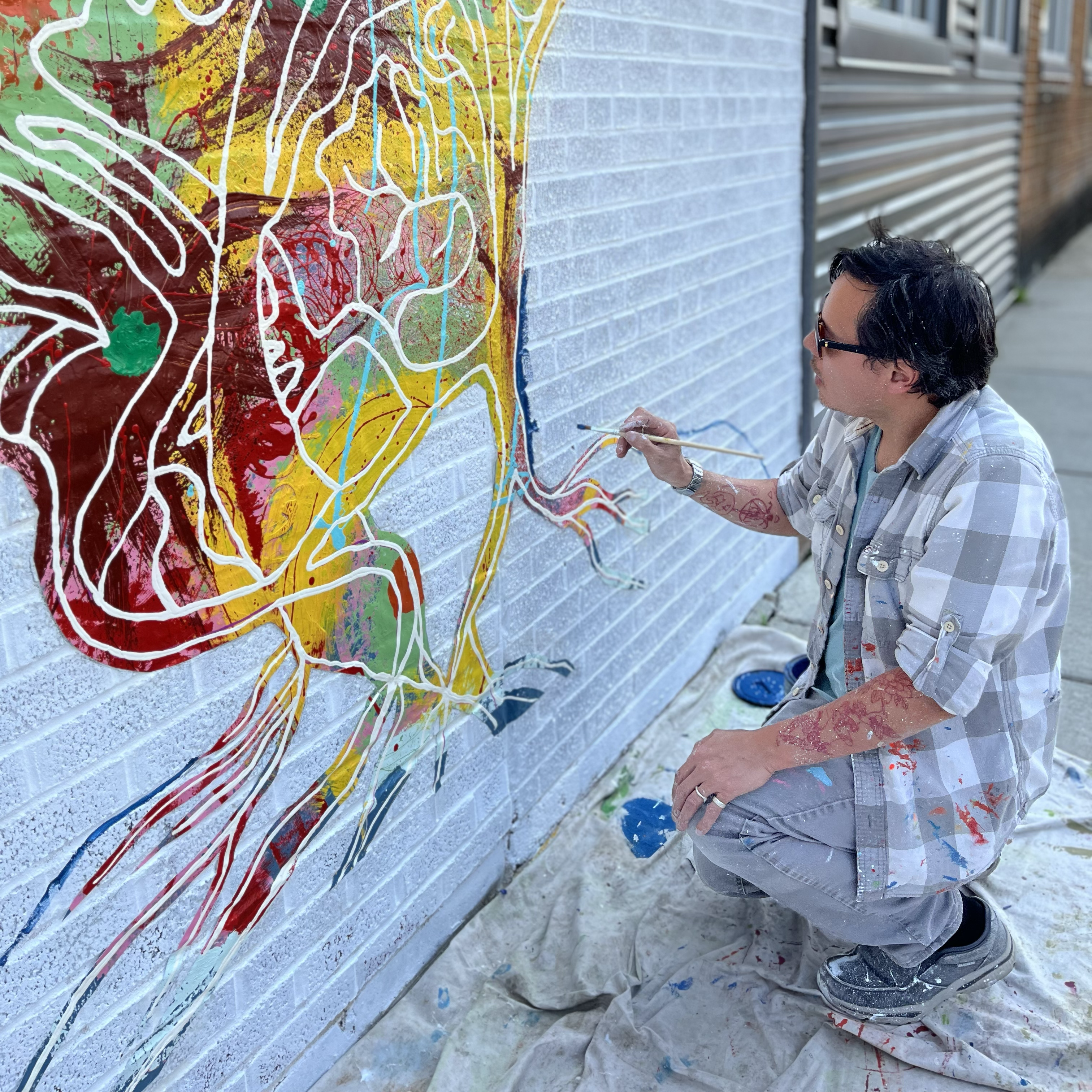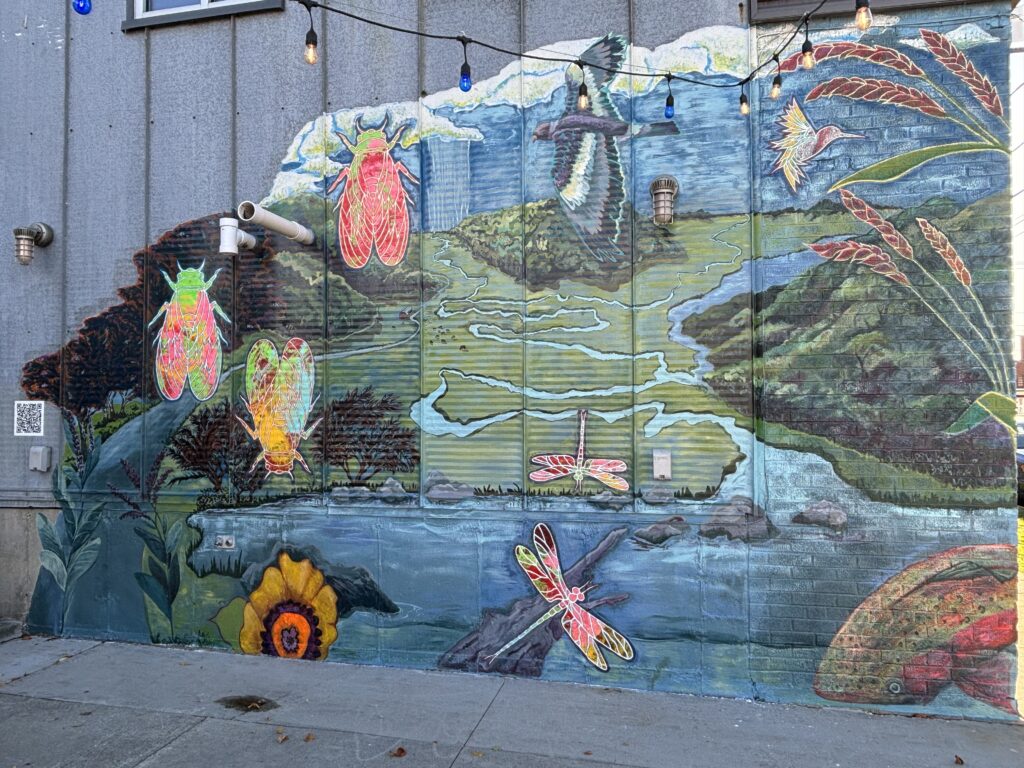
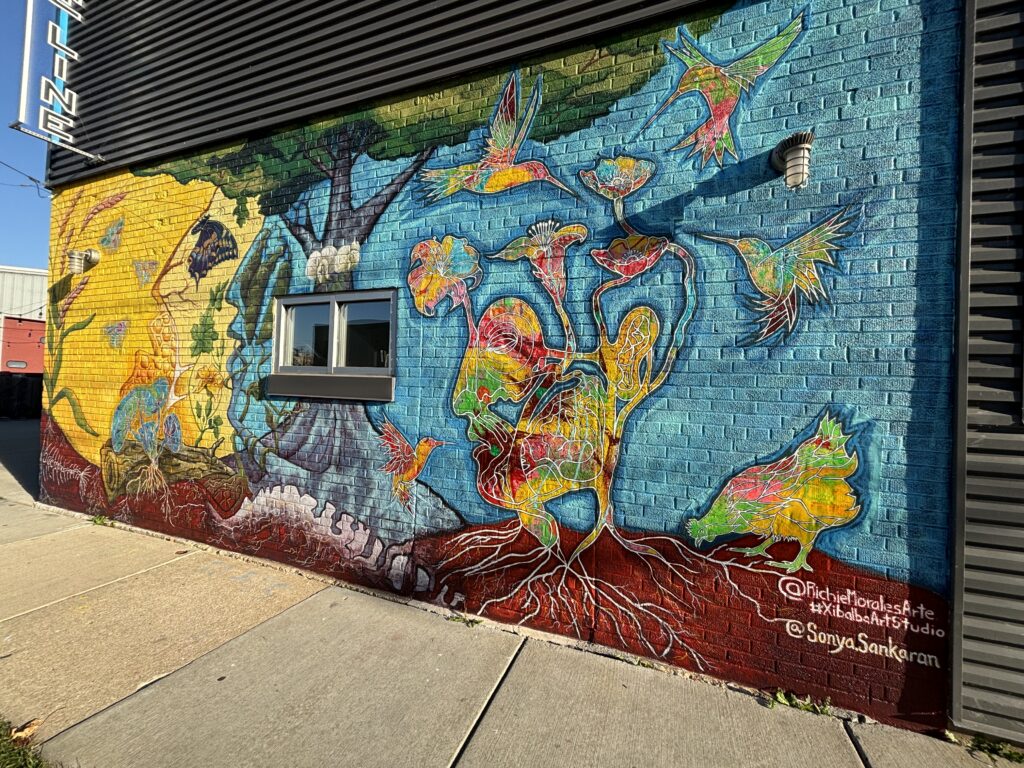
Regenerative Coexistence
State Line Distillery
1413 Northern Ct, Madison, WI 53703
Artistic Perspective: Highlights and Metaphors

Hummingbirds
The hummingbird embodies numerous ethereal and subtle qualities. We could utilize its delicate wings as a metaphor to link them with the fragility of existence, along with the splendor of its hue, as well as the exquisite moments of life.
In the tangible realm, its significance resides in its capacity to pollinate a diverse array of flowers, establishing an intricate web of interconnection and nourishment for myriad beings that influence the environment encircling us.
What intrigues me metaphorically about the hummingbird is the manner in which it symbolizes the sanctity of existence through its intricate juxtaposition of vigor and delicacy, serving as a poignant reminder that we are all interconnected with a grandeur that transcends individuality.
In the paradox of our existence, where we are destined for mortality, it is perhaps comforting to consider that nothing truly perishes, but rather undergoes metamorphosis.

Woman's Face
The great tragedy of human beings is not to find a sense to our existence. This tragedy, when it happens, does not originate in our beingness but rather in the modern contexts that we inhabit.
Perhaps then, going back to our roots might the act that inaugurates the start of our true freedom.
To transcend the algorithms and toxic positivism of the modern world to embrace ourselves as human animals, sentient, rational, instinctive, interdependent and mystic beyond our persistent delusions of superiority and dominance.
To practice living as a whole, humble and present daily, knowing ourselves mainly water, energetic spheres infinitely interconnected, cosmic, chaordic, ephemeral and eternal.
To live remembering our spiritual connection with Earth, our most pure and ancient root calling us back. It is time.
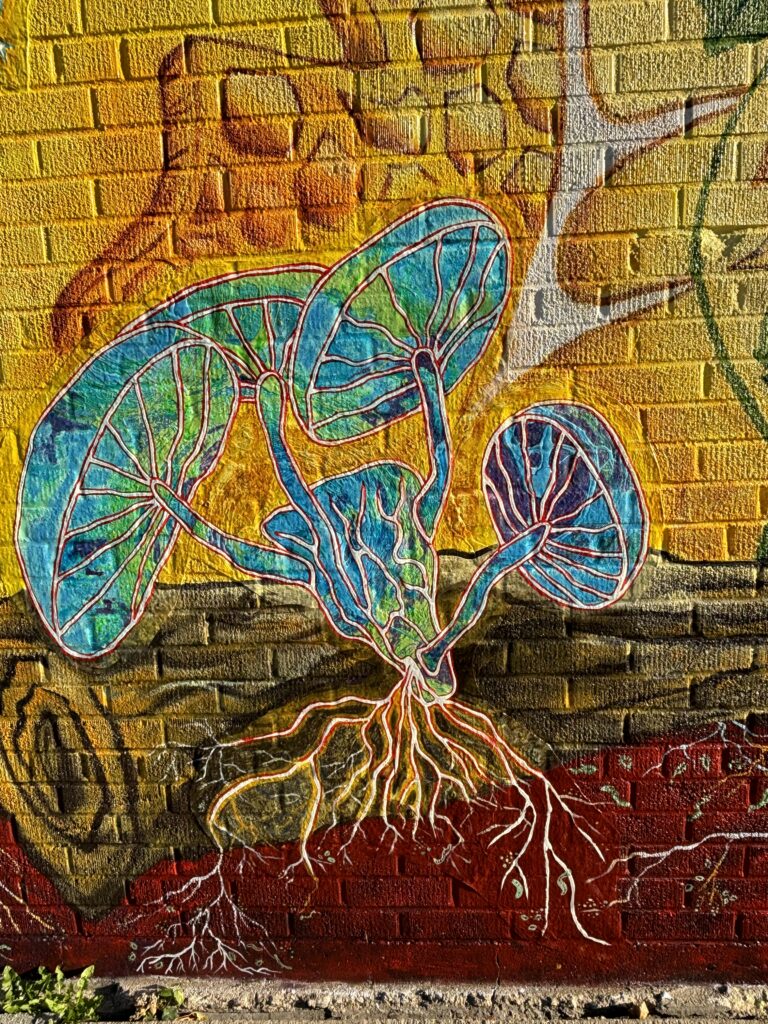
Soil
The brick wall side of the mural features a cross section of soil with microbes (green), and lines representing roots and mycelium (white) and chemical exchange (blue and orange). The spinal column represents how these root and mycelial networks transport chemical messages, reminding us that the earth works like a single, multi-faceted organism. The fish skeleton, decaying log, elk skull and mushrooms symbolize the constant cycling of all life.
Can you locate these other elements of Regenerative Coexistence?
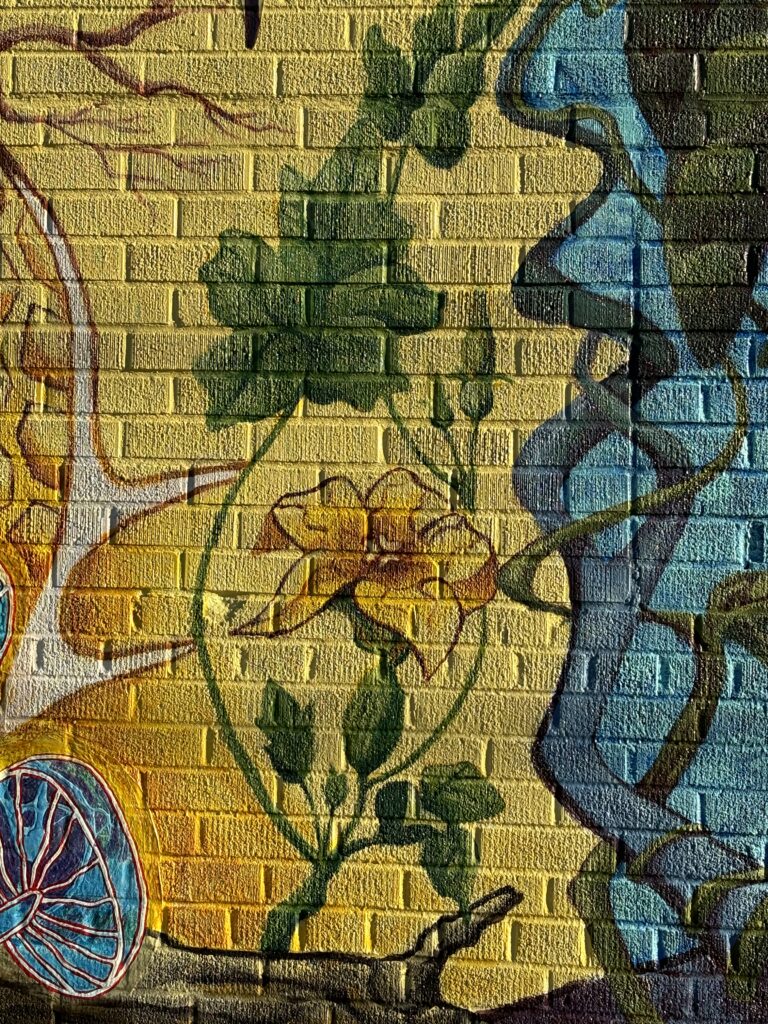
Squash
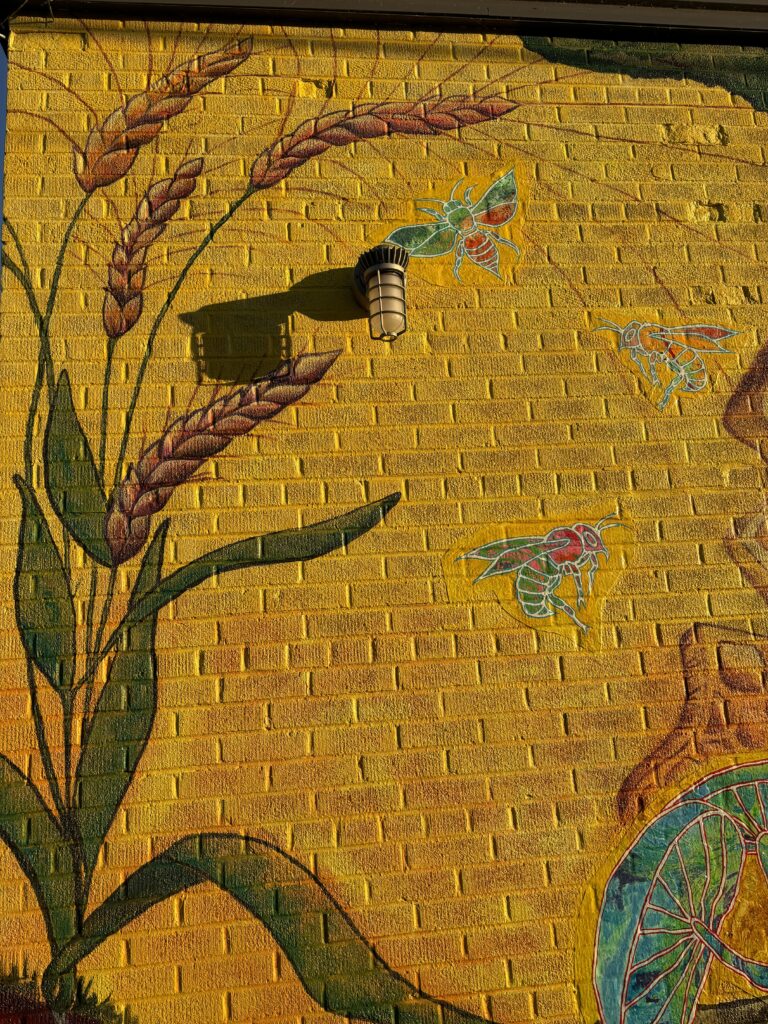
Wheat

Peas
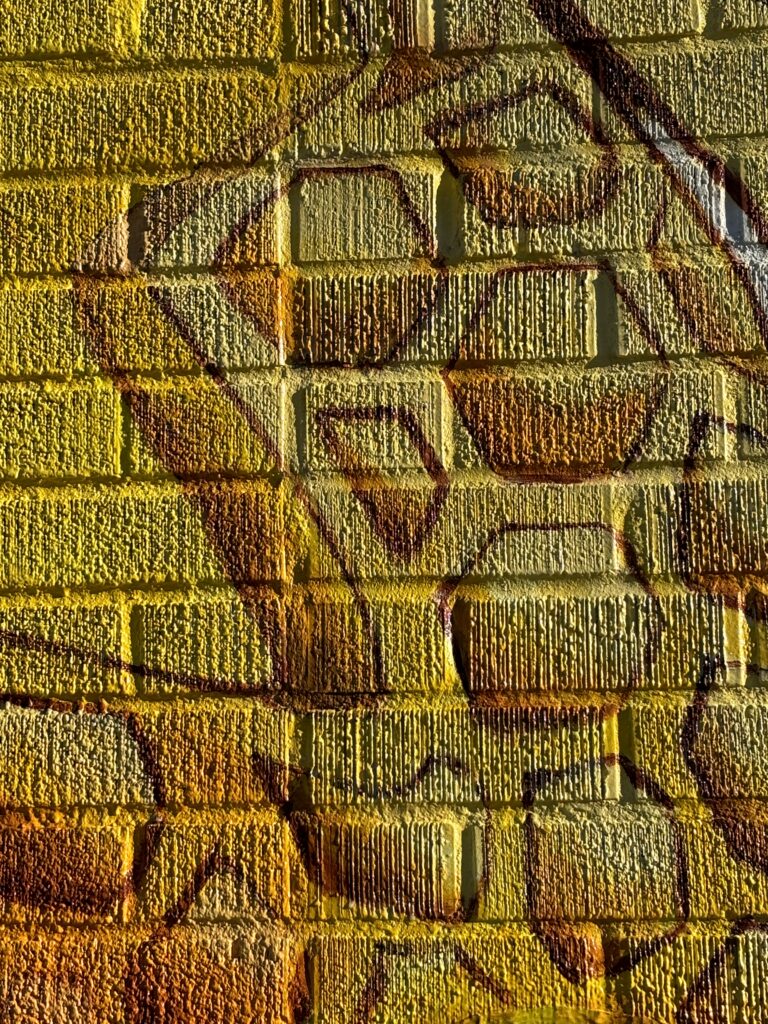
Honey
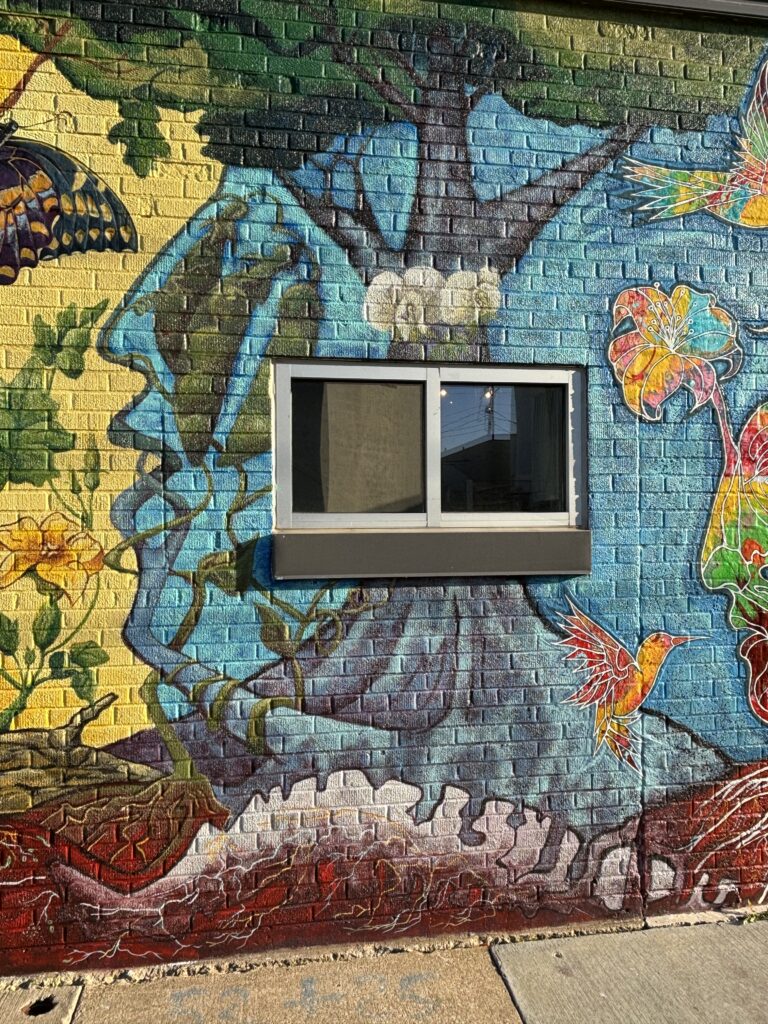
Burr Oak
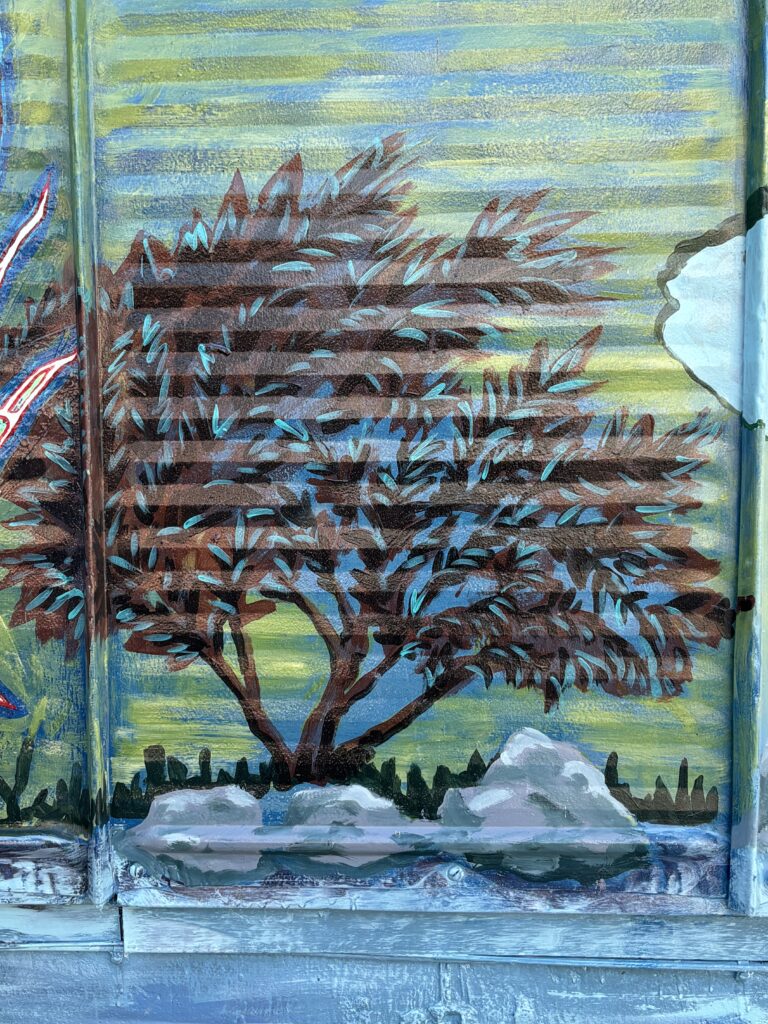
Willow
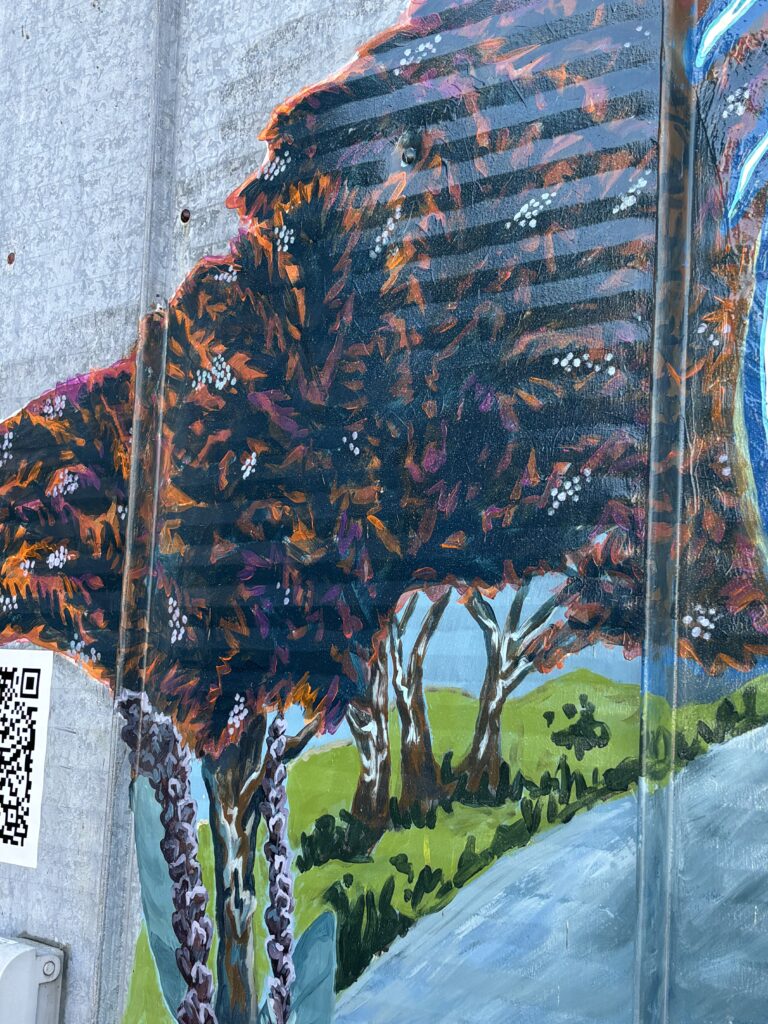
Juniper

Sage
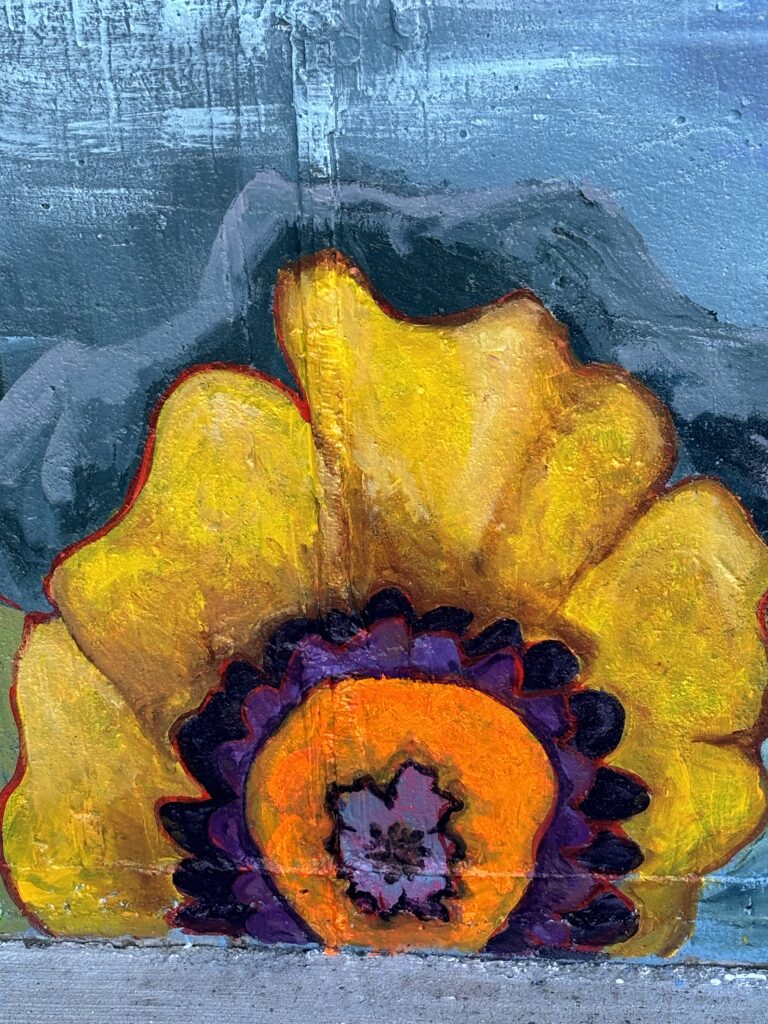
Marsh Marigold
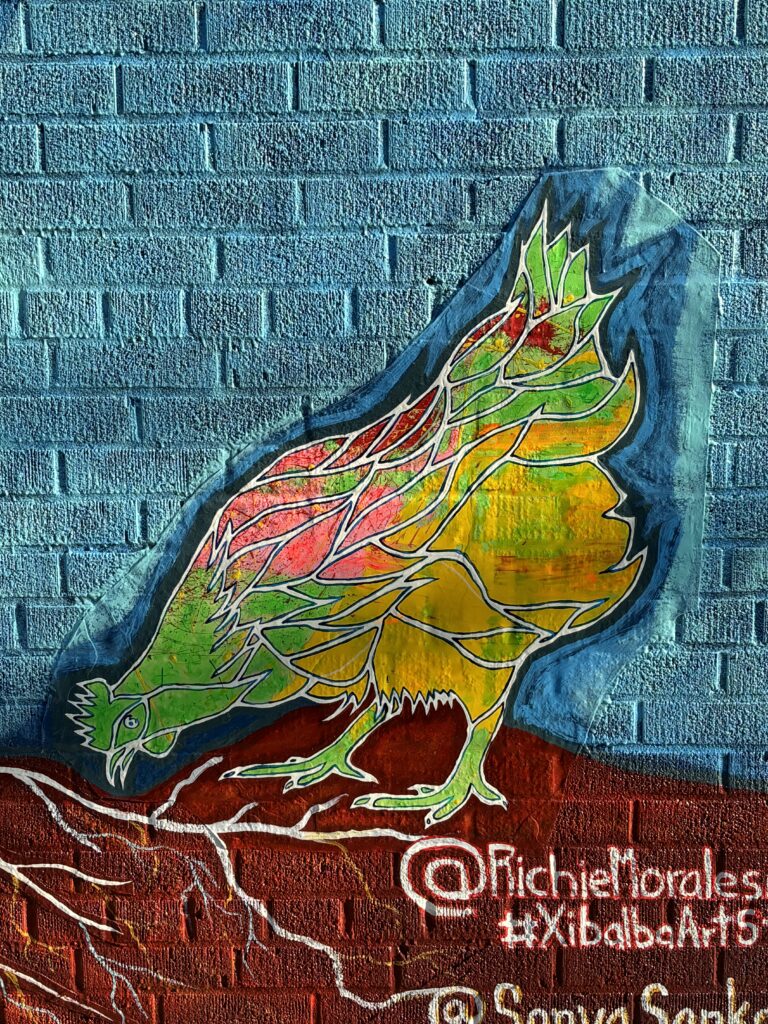
Chicken
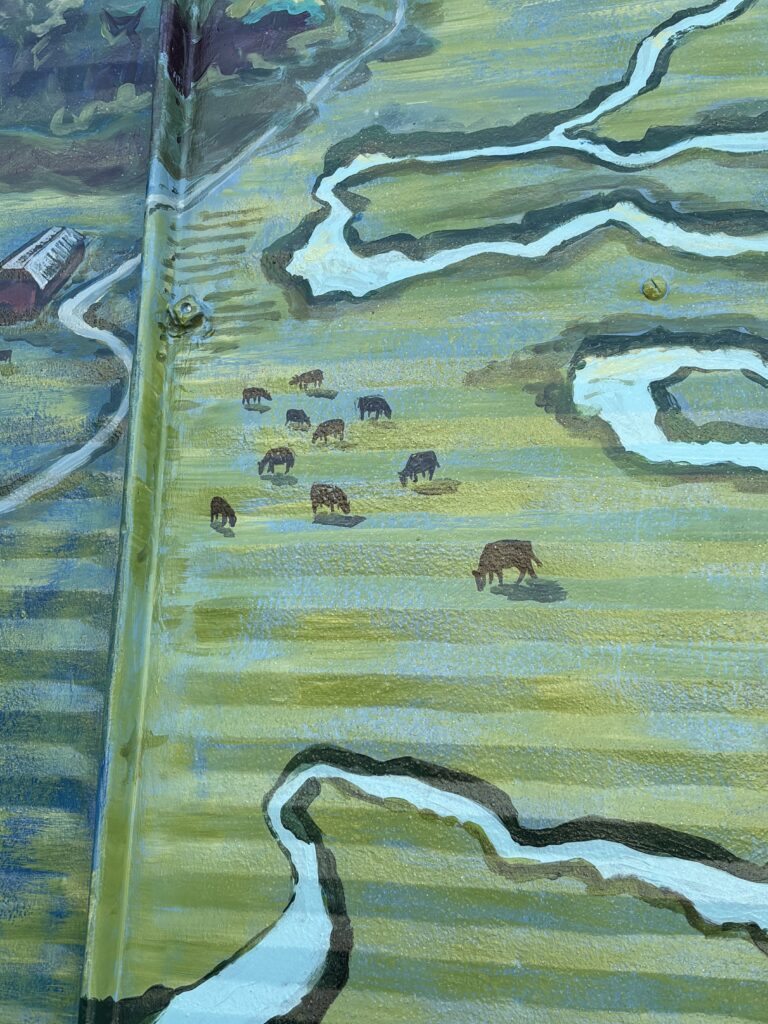
Cattle
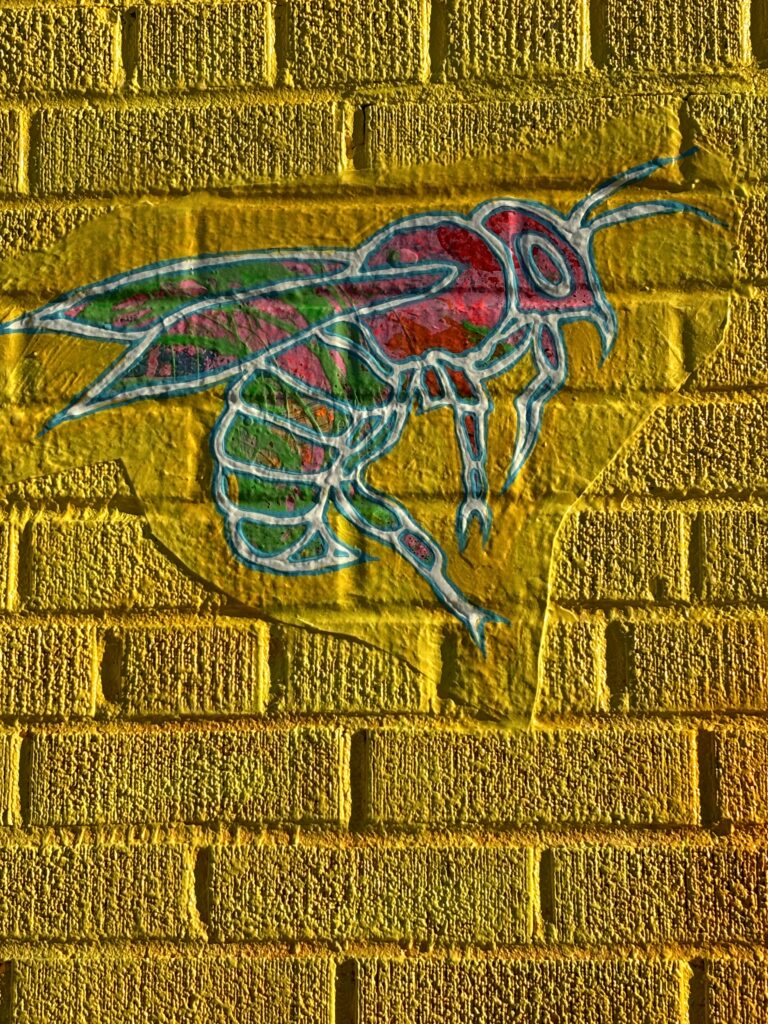
Bees
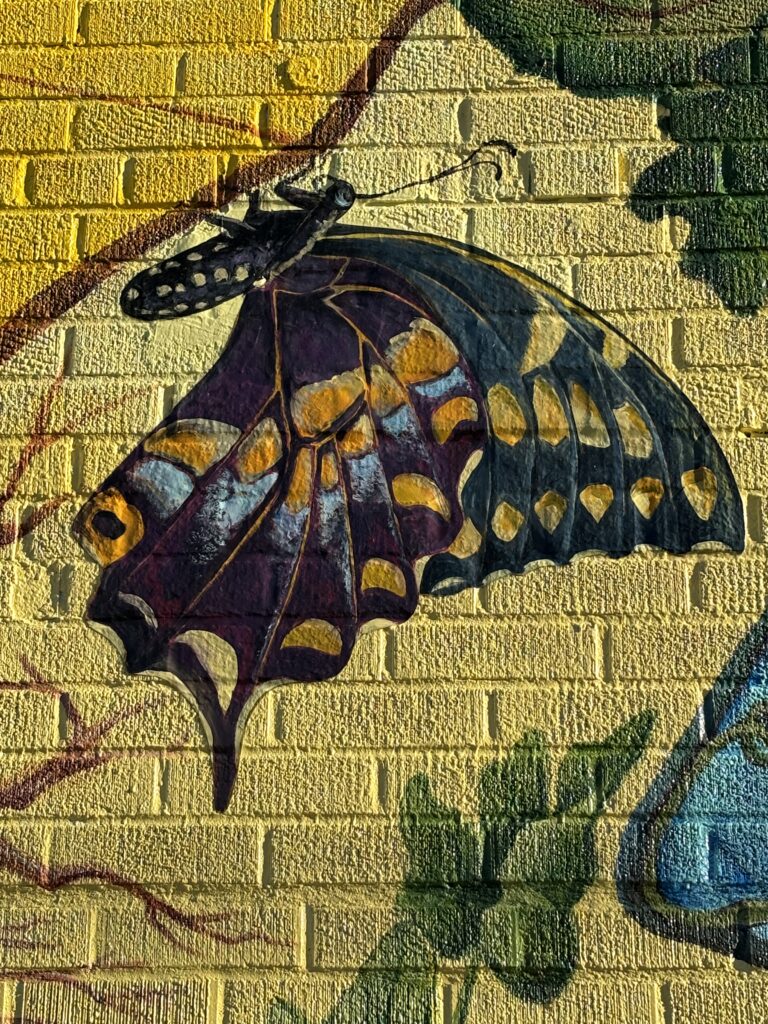
Black Swallowtail butterfly
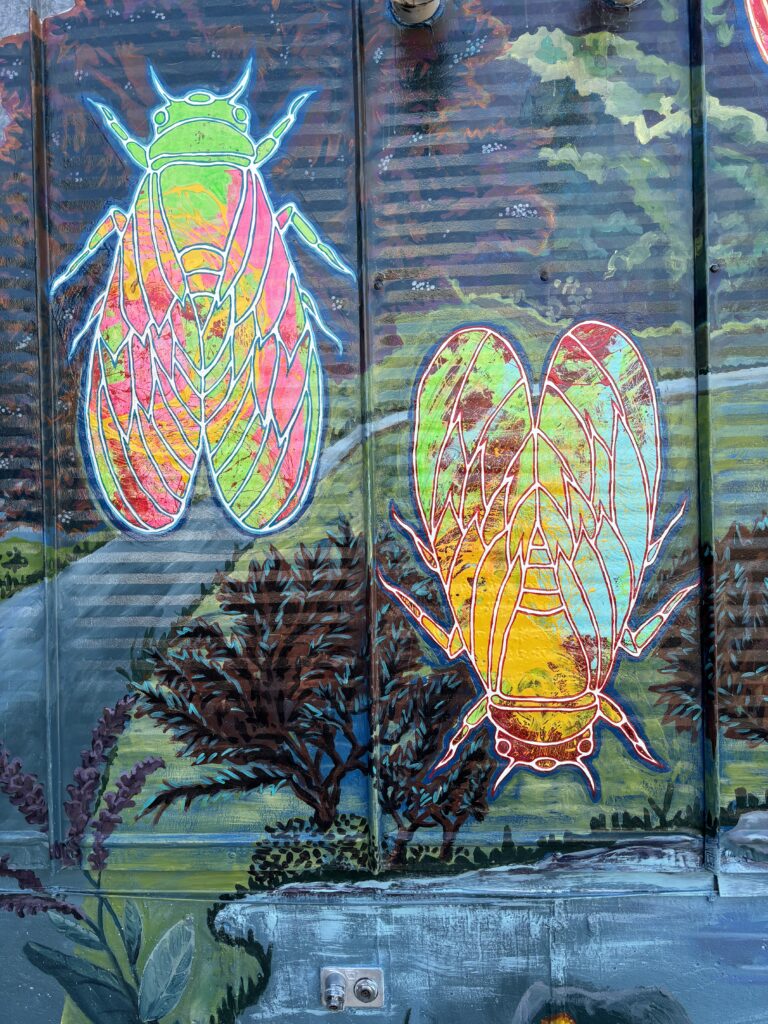
Cicada
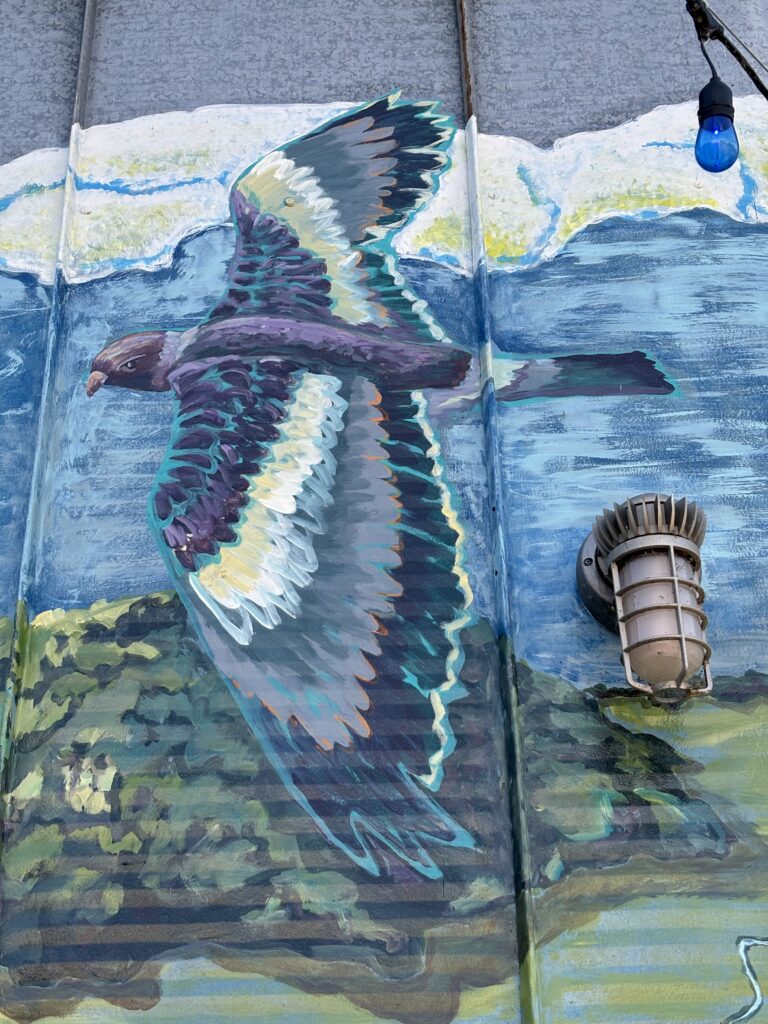
Raptor
3 Questions with Sonya and Richie
The mural explores aspects of regenerative agriculture as a model for the coexistence of all things, living and non-living. Richie grew up in a farming community, growing crops such as corn, beans, squash, lettuce, tomato and radishes. He later studied agriculture and currently co-owns an avocado farm. He contemplates our relationship to the earth and how our existence is tied to all things physical and metaphysical, which is reflected in his work. Sonya grew up in Wisconsin, spending most of her childhood outdoors by Lake Mendota. She studied ecology, lived and worked in the tropics and has a master’s in marine botany. As an artist, ecologist and educator, she contemplates how our relationship to nature has shifted and believes that we are more at peace, spiritually, mentally and physically, when we are cultivating our connection to the land and our ancestors. That peace leads to deeper learning and sustainable innovation.
Through our collaboration with Randy Jackson, we learned about principles which focus on outcome of regenerative soil. An interwoven mosaic of diverse grassland, well-managed livestock, and row crops of human-edible foods is paramount for the conservation of carbon and the proper cycling of nitrogen, phosphorus and water, to name a few. When the land is nourished in this way, diverse ecosystems thrive.
Art pulls us out of the present and into another person’s experience. That transportation allows the viewer to feel something they have in common with the artist or get a peek at something they have never experienced. Either of these responses connect us to each other non-verbally. We need these connections to naturally cultivate compassion for one another. Before museums, much of art was public art. Most of our everyday items were artistic – pots, weaving, wall paintings, etc. It is important that people have original art in their everyday lives to connect energetically to those who create them and inspire connection to others.
Communicating these concepts through art allowed us to absorb the technical information and translate it into the artistic imagery that our minds and hearts use to fully understand each aspect. Humans have been practicing these methods for millennia. We have ancestral knowledge coursing through us that tells us what a healthy ecosystem looks, feels, and smells like. The scientific facts that tell us that an ecosystem is healthy offer a compelling break down of why the system is healthy. The art brings those two parts together to celebrate the beauty of each.
